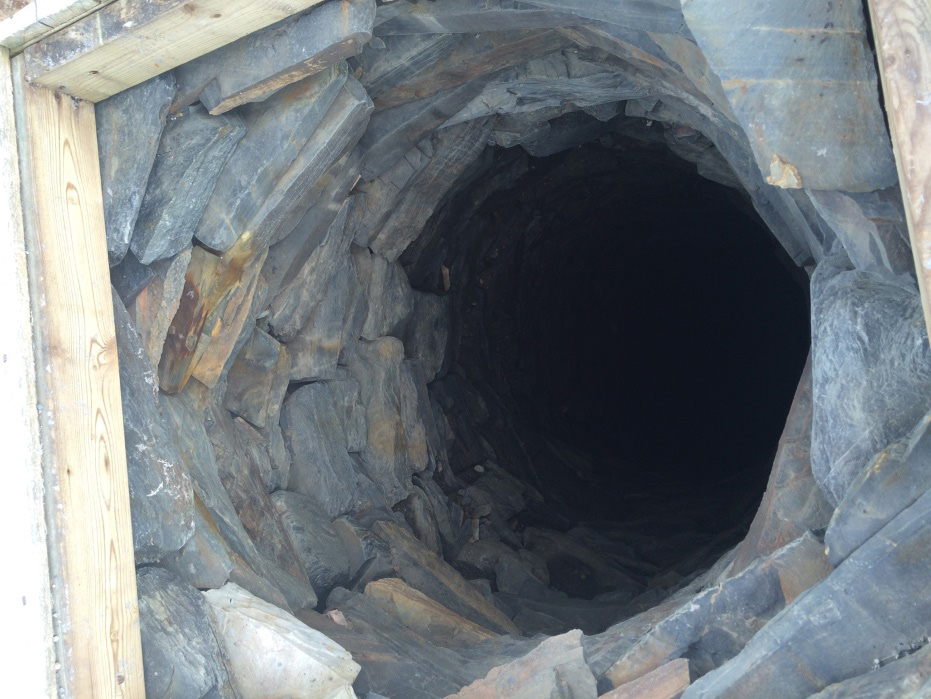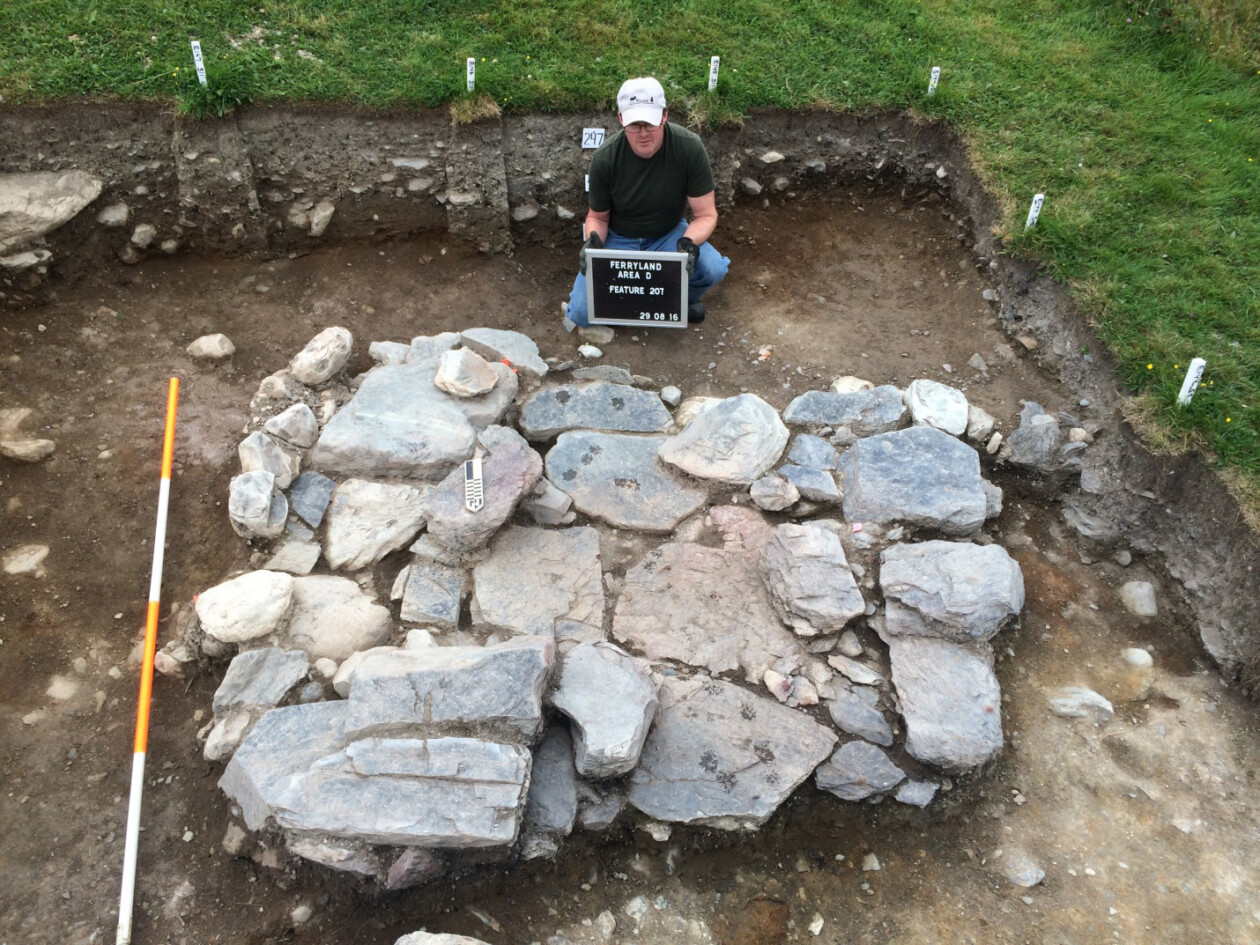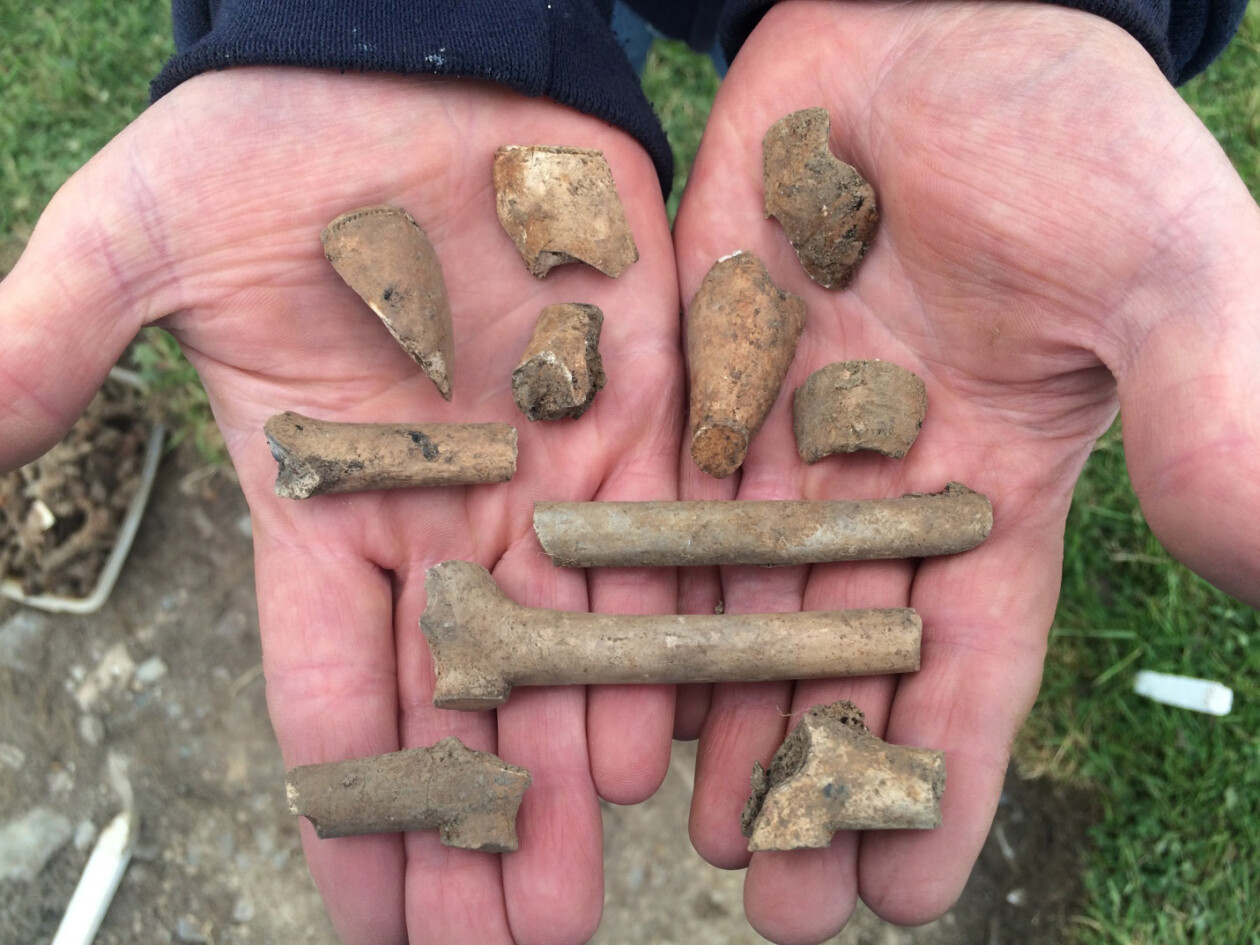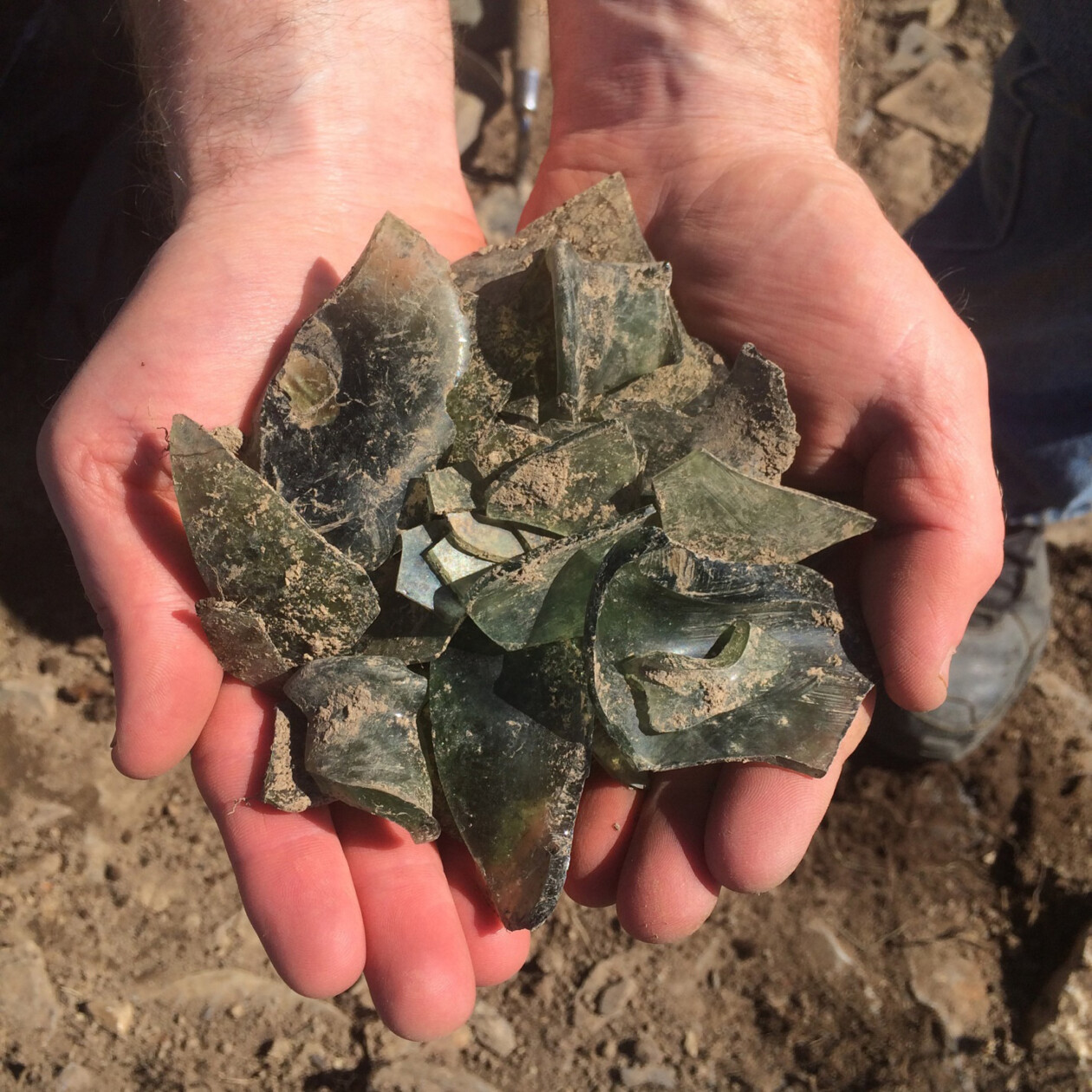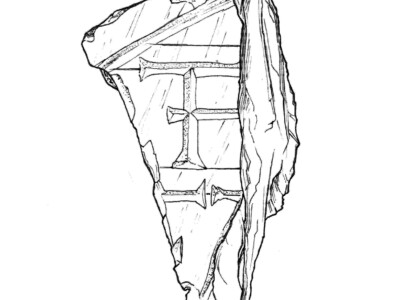The 2016 field season was different from previous seasons in that the field crew spent a lot of time digging test pits in unexplored areas, particularly along the eastern perimeter of the site. In preparation for a possible new road that may be running along the northern edge of The Downs, it was necessary to systematically dig test pits to ensure the road would not be covering or damaging any culturally significant features.
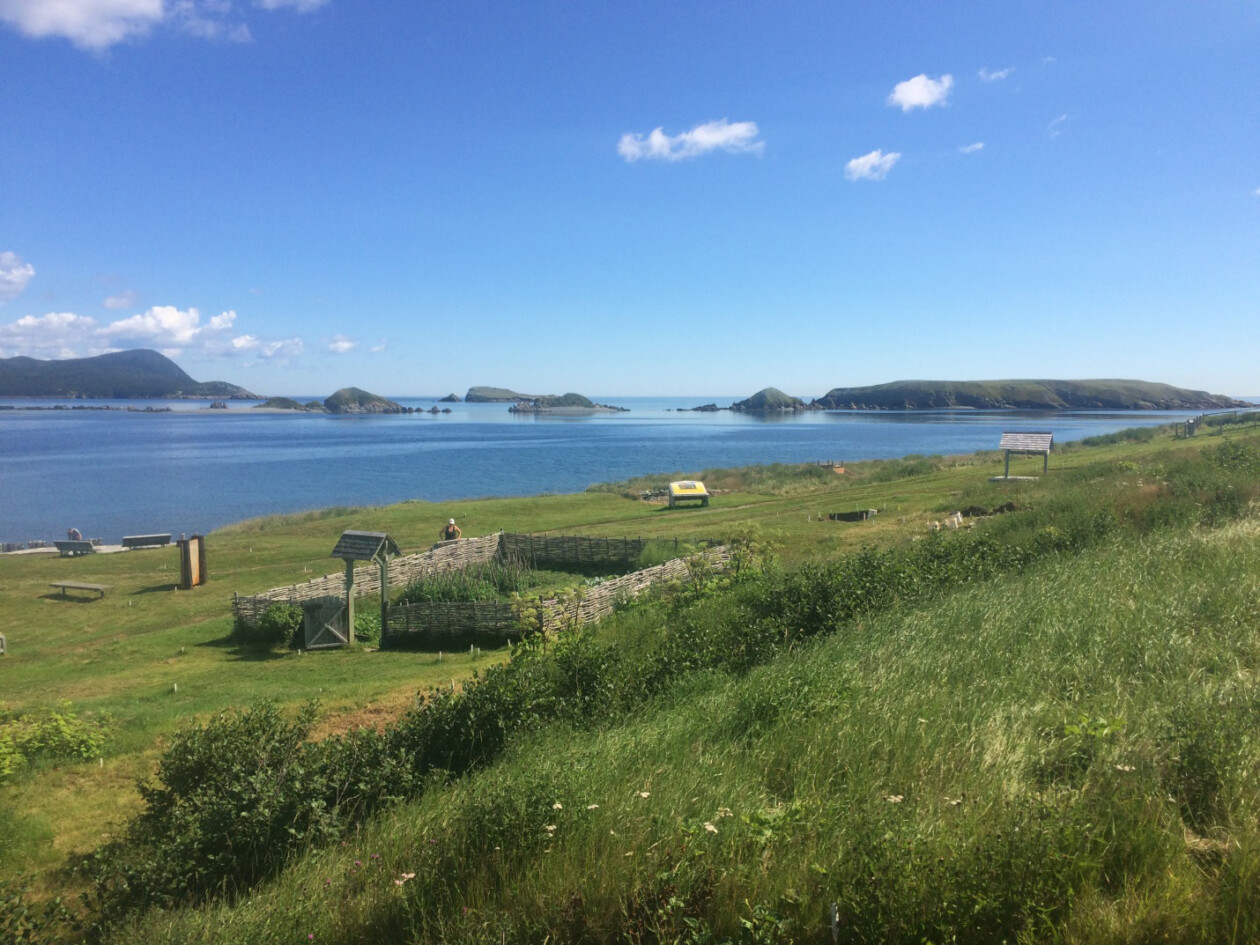
View of Area D. This is the eastern part of the archaeological site and is located outside the original palisade wall of the Colony of Avalon.
With only four of us working in the field this season it took us several weeks to test the entire area under consideration. The test pits measured approximately 50x50cm and were dug by hand with shovels and trowels. Starting at the eastern perimeter of the site, four test pits were dug in a row spaced approximately 3-4m apart north to south. The next row of test pits were placed 4-5m to the west until we reached the end of our study area just before the Defensive Ditch in Area D. To be more thorough we also staggered the test pits and with each row we moved slightly to the north (down the hill). Think of a checker board pattern! It was a fairly large area to cover and this system ensured that we did not miss any archaeological features.
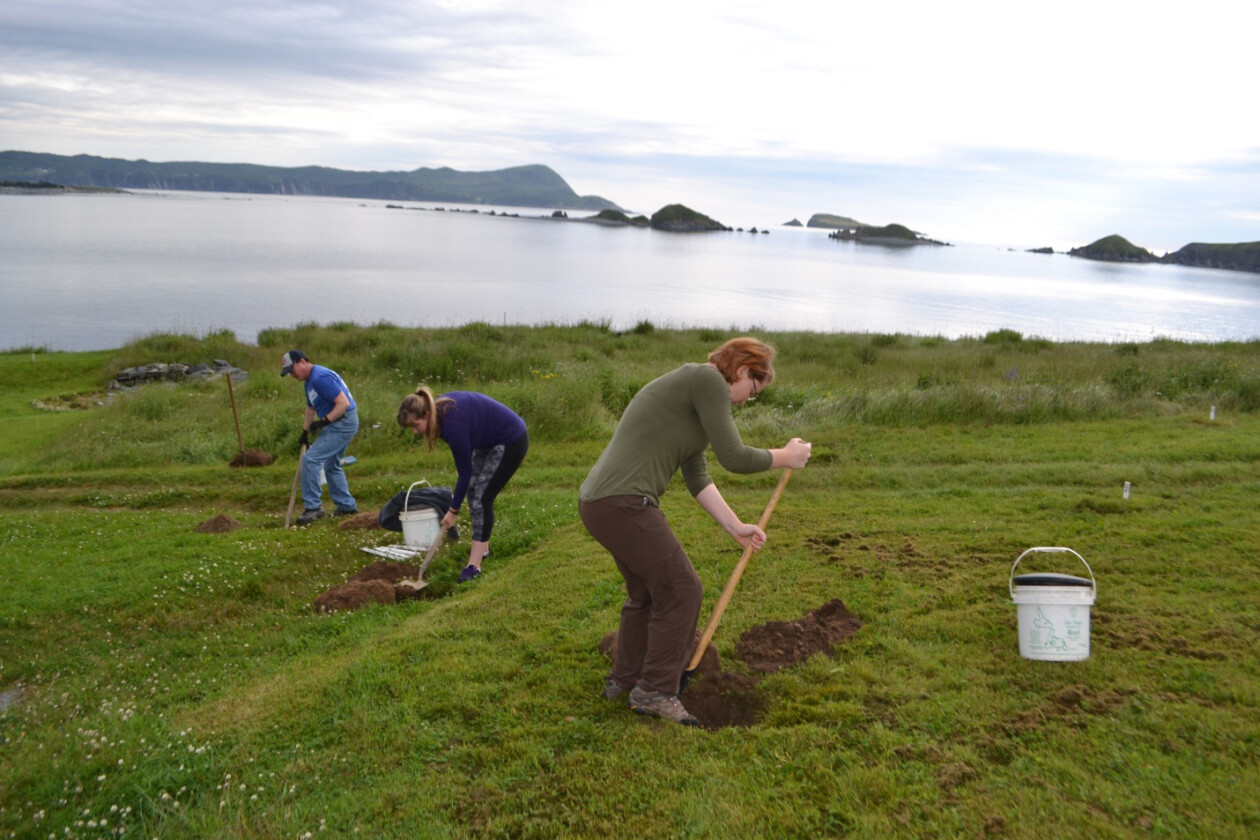
Neil Jordan, Catherine Hawkins, and Colleen McNulty digging a row of test pits. Photo courtesy of Dr. Barry Gaulton.
Before this extensive testing, minimal archaeological excavations were done in Area D. Two significant features were found in this area in the 1990s: a 17th century stone-lined well and planter’s house (Crompton 2000a-b). Test trenches were also dug in the late 1990s for our reproduction Kitchen Garden and in the early 2010s for our garlic/potato garden. There was much more to explore in this large grassy field, which made testing the area all the more exciting!
As mentioned previously, all this test pitting was in preparation for a possible new road that would run along the eastern shoreline of the site. After digging 80+ test pits, we came to the conclusion that there were no significant archaeological features in the proposed location of the new road. The test pits here did not provide any intact cultural layers or structural remains. They consisted of mixed up topsoil/garden soil directly above subsoil with very few artifacts, most of which dated to the 19th and 20th centuries.
We did, however, dig a few test pits just to the south of the path of the potential new road, closer to the stone-lined well and reproduction Kitchen Garden. Here we discovered two new features! The first was a fireplace or hearth and the second was a pile of building rubble, both dating to the 17th century.
LATE 17TH CENTURY FIREPLACE
Very close to the stone-lined well (approximately 3m east), archaeological field assistant Colleen McNulty dug a test pit and discovered a secure layer of extensively burnt charcoal containing iron nails and clay pipe fragments. Originally we thought the burning may have been a result of either the Dutch or French raids in the late 17th century, but further excavation proved otherwise.
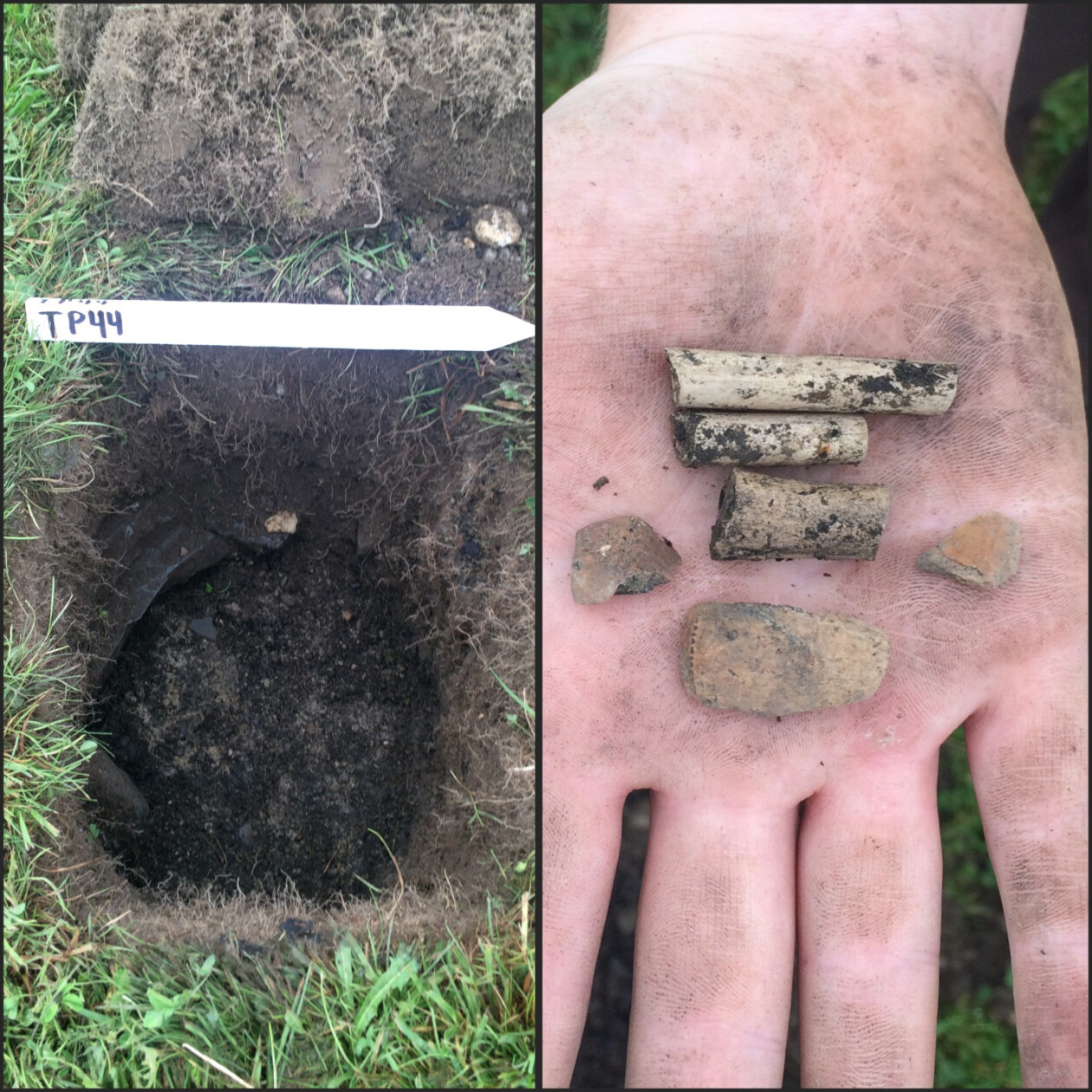
Colleen’s test pit and the pipe fragments that were found. Note the black charcoal layer at the bottom of the test pit.
We quickly expanded Colleen’s test pit to a full 1x1m unit to get a better idea of the extent of the burnt charcoal. It became clear that it covered the entire unit and seemed to continue to the east, south, and west. At the same time, archaeological field assistant Neil Jordan dug another test pit 1-2m south of Colleen’s and he came across a dark brown layer of soil containing many, many iron nails above a heavily fire cracked flat rock or flagstone.

Neil digging another test pit to the south of where Colleen and Dr. Gaulton expanded the test pit with evidence of burnt charcoal. The stone-lined well is just behind them!
Everything found in this area suggested that there must be something here: the extensively burnt charcoal layer, the dark layer of soil containing handfuls of iron nails, and the artifacts uncovered such as fragments of a North Devon milk pan, the base of a Type 2 case bottle, pipe stem fragments, and a tiny glass bead. We expanded this area into a 1x4m trench running north to south – it was getting pretty exciting!
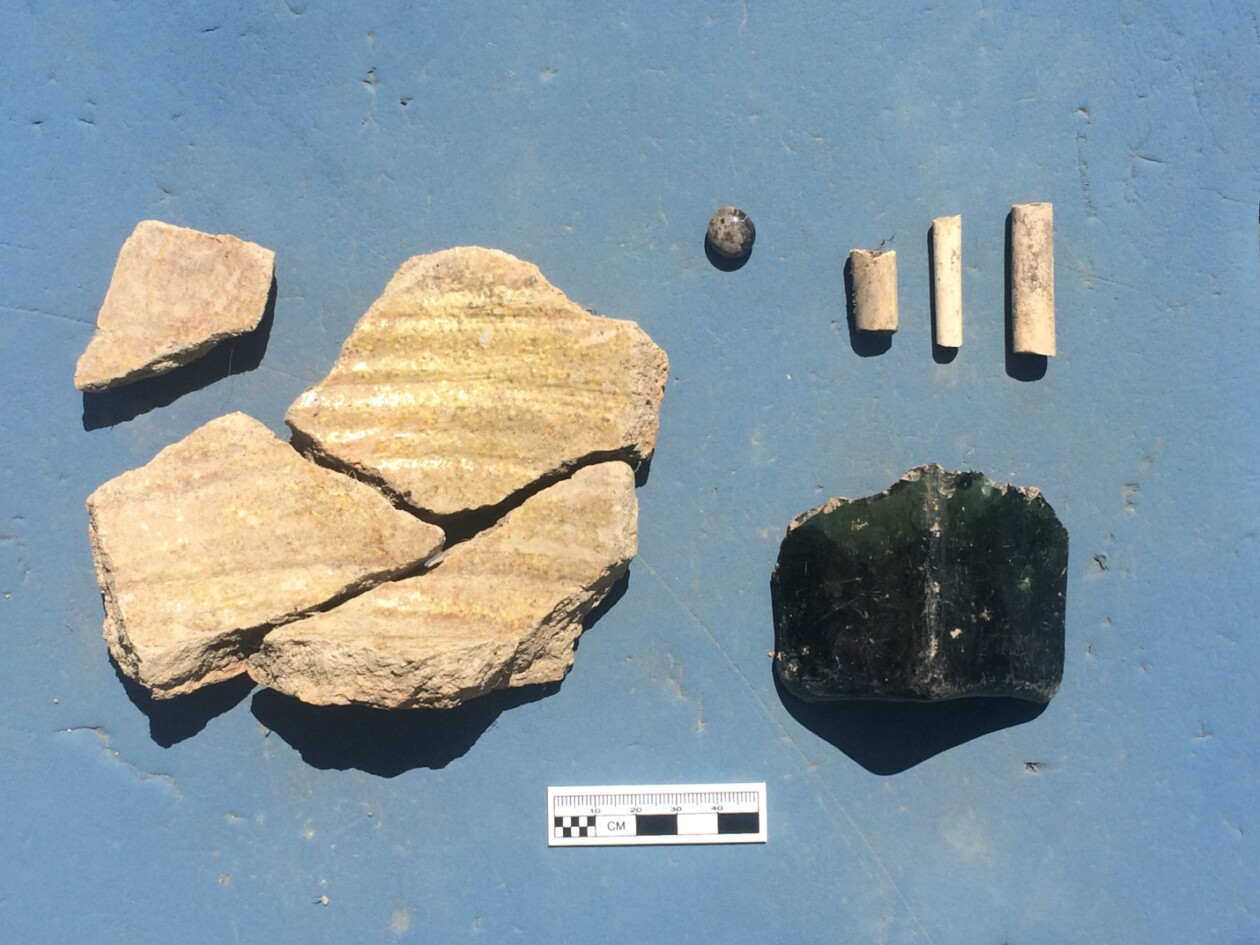
North Devon coarse earthenware (milk pan?), pipe stem fragments, the base of a dark green, late 17th century case bottle and a tiny glass button.
Once we excavated the 1x4m trench we got a much better idea of what we were dealing with. It seemed that there was a small stone fireplace or hearth in this area, indicated by the extensive burning of the soil and the fire cracked flagstones in the center of the stone feature. In this trench we found hundreds of heavily corroded iron nails, fragments of several different types of ceramics such as North Devon coarse earthenware, Iberian storage jar, and Portuguese redware, onion and case bottle glass, and tobacco pipe fragments including a heel with the mark “BARVUM”. All of the artifacts, especially the maker’s mark found on the pipe, suggest this features dates to the mid to late 17th century.

A tobacco pipe heel was found above the stone fireplace. The mark on the heel is “BARVM”, which is Latin for Barnstaple, where this pipe was manufactured. This suggests a late 17th century date.

The 1x4m trench after excavation. The stone feature in the center is the fireplace or hearth. Notice the fire cracked flagstones in the middle of the feature!
After recording and mapping the 1x4m trench soil profiles and photographing the excavation progress, this area was expanded again to the east and west to determine the extent of the feature. More of the same artifacts were uncovered, providing further evidence for a mid to late 17th century date. One of the more exciting finds in this area was the claw of an iron hammer found by Colleen in the burn layer of the fireplace. One of the few 17th century hammers we have found here at the Colony!

Colleen holding the 17th century hammer in the location where she found it. The bottom image shows its size compared to a modern hammer.
By exposing a 4x4m pit we were able to clearly see how large the feature was. It was a small stone rectangular shaped fireplace measuring approximately 6ft long (~180cm) north to south and 7ft wide (~210cm) east to west. Current interpretation is that the fireplace is open to the south, with the back wall being to the north. Next season we plan to remove some of the upper rocks that may be out of place. It will then be possible to get a better view of the lower courses and therefore a better understanding of the size and thickness of this fireplace feature.
No other structural remains were found near the small stone fireplace. The presence of post molds or floor joists would suggest that this fireplace was part of larger wooden structure, but no evidence has been found so far. Since the artifacts found closely resemble those found during the excavations of the well and planters house nearby, it is possible that the fireplace is associated with them. Perhaps it represents a small servants’ quarters or an associated outbuilding belonging to the planters who lived in the house to the north. Further research will shed more light on this interpretation.
17TH CENTURY BUILDING RUBBLE
Located between the stone-lined well and the reproduction Kitchen Garden, to the west of the small fireplace previously discussed, archaeologist Barry Gaulton dug a test pit and came across many, many small to medium sized rocks with very little soil. As an archaeologist, this heavily suggests rubble associated with the collapse of a stone building. Since it was difficult to dig the test pit with a shovel due to the heavy concentration of rocks, he decided to expand this area to a 2x2m trench.
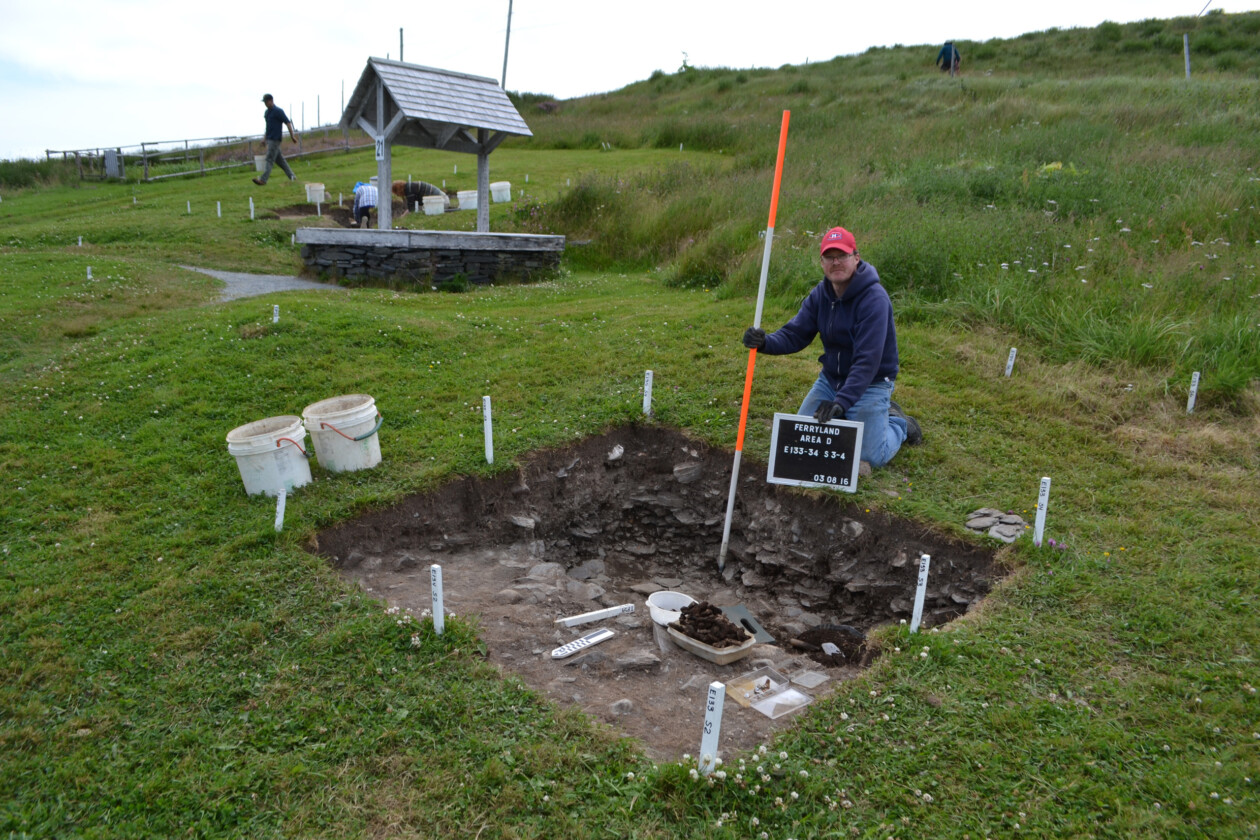
2x2m trench during excavation. The stone-lined well and excavation of the 17th century fireplace is just to the east in the upper left corner of this image. Photo courtesy of Dr. Barry Gaulton.
Along with the many, many rocks being uncovered, 17th century artifacts were also found. Neil uncovered handfuls of case bottle glass fragments, as well as several pipe stem and bowl bits, tin-glazed earthenware, North Devon coarse earthenware, iron nails, and some unidentified faunal remains. These artifacts suggest a 17th century date and were found just above the building rubble.
Generally when we excavate a unit we dig down to subsoil (sterile soil). In this 2x2m trench we did not do that. In the northern half of the trench there were fairly large slatestone rocks that had at least one straight edge, a characteristic of wall rocks. In the southern half, Neil found layers of roof slates intact with nail holes. This kind of debris is typical of an in situ building collapse. Instead of removing the wall rocks and roof slates we thought it would be better to leave them in place until we get the opportunity to continue excavating in this area.

The 2x2m trench with building rubble. On the left (south side) are layers of roof slates with nail holes and on the right (north side) are many large wall rocks.
This area requires further excavation before we get any idea of if there was in fact a building here, what it was used for, how big it was, and a more concrete idea of how old it would have been. Next season we plan to open up more excavation units adjacent to this 2x2m trench to gain a better understanding of what is going on here. This is definitely something to look forward to!
Although digging test pits can be a lot of hard work and labour, sometimes it is so worth it! You really never know what you will find. Uncovering new discoveries such as the small stone fireplace and the building rubble can shed even more light on what life what like here in Ferryland during the 17th century. There are still many questions unanswered but with further research and excavation we hope to fill in the blanks.
References:
